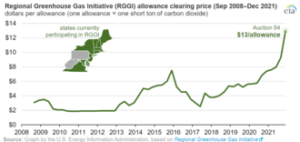
What Are Cap and Trade Carbon Credits?
Cap and Trade Carbon Credits
There is a growing movement in the US to introduce cap and trade schemes to reduce greenhouse gas emissions. This is in response to the increasing threat of climate change. Global climate change is a serious problem that poses a threat to human health and aquatic ecosystems. Carbon credits, permits, and taxes are the tools that allow the government to regulate emissions. They are also a way to encourage innovation and low-carbon processes.
The California trade carbon credits program was created in 2013. It is the fourth largest in the world, after the EU and China. The California Air Resources Board (CARB) auctions allowances to polluters as the cap declines. CARB’s goal is to build confidence in the market. It will calculate the amount of allowances needed to meet the 2020 target to cut carbon emissions to 1990 levels. In addition, the allowance budget will be calculated to meet the 2030 target to reduce emissions to 40 percent below 1990 levels.

The idea behind cap and trade is to reduce emissions in the most cost-effective manner. The biggest polluters are limited to a certain share of the industry’s cap. Those who are not able to meet the cap must buy carbon credits from other companies. This allows the overall playing field to tilt towards non-emitters.
What Are Cap and Trade Carbon Credits?
Carbon credits are tradable certificates, allowing companies to emit one tonne of carbon dioxide. They are traded in an international market. Each carbon credit is worth about 2,400 miles of driving. The cap and trade system imposes a limit on GHG emissions from developed countries, and it has been implemented in other countries as well.
A study by Stanford University estimated the minimum price for carbon at $220 per ton. This price is supposed to drive technological innovation, but it hasn’t worked in any market. Moreover, cap and trade programs have been criticised for failing to drive down carbon emissions. In fact, a recent Morningstar Equity Research study found that most markets fail to raise the cost of carbon.
There is debate about the best methods to reduce emissions. However, most studies agree that the reduction of GHGs is necessary to stabilize the climate. The CARB’s White Paper on REDD (Reducing Emissions from Deforestation and Forest Degradation) is an example of a project that can help achieve this goal. The project must be well-designed and verified to ensure that it actually reduces emissions.
Some businesses are concerned that the bill gives a financial incentive to polluting firms. They say that the bill undermines the goals of the cap and trade program. Some environmental justice advocates argue that it removes incentives to reduce emissions. They have also warned that the allowances given to polluters could be abused.
The California climate bill provides the nation with its toughest emission standards. Some environmental groups are calling for on-site reductions at polluting facilities, and they claim that the bill undermines the cap and trade’s main goal. The CARB has proposed to extend the carbon emissions reduction scheme to 2030, instead of the current 2020.

No Comment